The recent debate about the future of the Australian Army’ decommisioned Taipan helicopters has highlighted a lack of coordination and transparency in Australia’s approach to supporting Ukraine. More importantly, Australia lacks a strategy that explains the purpose of supporting Ukraine, what kinds of assistance might be provided, and how this can be coordinated in a whole-of-government manner.
Shortly after the Russian invasion in February 2022, Australia offered its support for Ukraine. Thereafter followed several assistance packages, consisting of military equipment including Javelin missiles, Bushmaster vehicles, trucks and armoured personnel carriers. But over time, and with a change in government, attention and interest has waned here – and in other democracies. Now, notwithstanding the early support provided, according to kiel Institute static Australia is the sixth-largest non-NATO contributor as a percentage of GDP.
This year will be a pivotal one in the war. The Russians, having mobilised their defence industry in September 2022, now hold a clear production advantage. Combined with munitions provided by Iran and North Korea, this advantage in areas such as drones and artillery sees the Russians having the initiative on the battlefield until Western production can catch up. Ukraine will remain largely on the defensive in 2024 as it absorbs the Russian onslaught, and reconstitutes its military, in the hope it can conduct large-scale offensive operations in 2025.
But Ukraine needs more support to get through this year. With Russia likely to launch more offensives in the lead-up to the March presidential election, the need for military and other aid is urgent. To make matters worse, a failure of leadership by the US Congress has resulted in no new American aid packages for the near future. Every bit of assistance from other nations including Australia is vital.
Resources, diplomacy and coordination
There are four areas where the planning and provision of Australian aid to Ukraine can be improved. These should be key elements of Australia’s strategy for supporting Ukraine.
First, the amount of aid should be increased. Notwithstanding the support by Australian politicians over the past two years, assistance has been sporadically provided and focused on drawing from existing military stocks to reduce the cost to the budget. Overall, the cost to Australian taxpayers of assistance to Ukraine over the 700 days since 24 February 2022 of $910 million dollars represents five cents per person per day. Put another way, this is less than 0.3 per cent of the budget for the future submarine fleet. As the thirteenth-largest economy in the world, Australia can afford to do more.
Second, Australia should broaden the range of areas where aid can be provided. Eighty per cent of aid has been military. This assistance could be expanded to include more training for staff officers and senior leaders, armoured personnel carriers (vital for casualty evacuation), more artillery munitions from the new factory in Maryborough in Queensland, and an array of other requirements such as medical kits. And, where older equipment is being replaced, it should first be considered for transfer to Ukraine before disposal by other means. Key equipment such as the army’s armoured personnel carriers and M1 tanks will shortly be replaced and sholud be considedered for gifting to Ukraine.
But despite the need for weaponry and munitions, there are other areas where assistance might be provided.
For example, Australia is yet to provide a contribution to the World Bank’s. Reconstruction is a compelling need now; the Ukrainians can’t wait until the end of the war to begin. Australia could also contribute more to Ukraine’s humanitarian needs such as demining the large parts of Ukraine contaminated with Russian mines and unexploded ordnance. Australia might also provide direct financial assistance to keep the Ukrainian government funded as part of broader EU financial support efforts, and even more scholarships for Ukrainian students to study full-time in Australia.Beyond finances, more diplomatic supported is needed. Australia is yet to re-establish its embassy in Kyiv. If Australian diplomats can remain in Port Moresby during riots, and in Tel Aviv during Hamas rocket attacks, why can’t they serve in Kyiv with its superb air, drone and missile defence system? At the same time, Australian ministers need to visit Ukraine and gain a personal appreciation for the situation and the needs of the government. While Prime Minister Anthony Albanese has visited, neiher the Foreign Minister Penny Wong nor Defence Minister Richard Marles have done so A third and crucial element of an Australian strategy is coordination of Australia’s aid to Ukraine. Australian assistance has been largely uncoordinated and left to government departments and private entities. There is no advocate for assistance in Canberra and no central coordinating person or mechanism to ensure a robust, whole-of-government approach is taken to ensuring Ukrainian needs are compiled, prioritised and met where we can. But, beyond government support, a Ukraine support coordinator could also undertake collaboration between government, business and not-for-profit organisations wanting to assist Ukraine. As such, the strategy might enable a “Team Australia” approach for supporting Ukraine’s fight against Russia.
Strategic purpose – the key element
A final, desperately needed area for an Australian strategy for Ukraine assistance is for the Australian government to provide a clear statement of purpose – a public narrative – for its support to Ukraine. Albanese and Wong have mentioned supporting Ukraine in speeches. For example, in his 2023 lowi adres Albanes reiterated Australian support for Ukraine when he stated that “we stand with Ukraine in support of its courageous people”. This is useful but not a compelling vision for why Australia is supporting Ukraine. In 2024, the Australian government needs to outline the strategic purpose for investing in the defence of Ukraine – and the defeat of Russia.
While geography is an important determinant in many aspects of Australia’s national security, it is not the sole determinant. Cyber and information operations are global, and almost entirely free of national border constraints. So too it is with the idea that democracies are worth protecting, regardless of their form or geography. Mid-sized nations such as Australia also have a vital interest in not allowing establishment of a global norm where powerful authoritarians can invade their smaller neighbours.
A recent report by Freedom House “global freedom faces a dire threat. Around the world, the enemies of liberal democracy – a form of self-government in which human rights are recognized and every individual is entitled to equal treatment under law – are accelerating their attacks.” Perceptions of weakness in democracies is provocative to such authoritarians.
Despite international pressure, Russia maintains its maximalist objectives against Ukraine, which were . Russian success against Ukraine will beget more Russian aggression against other European nations (and more global economic instability), and it will embolden those in Australia’s region who aspire to supress or extinguish their democratic neighbours. China is , as is While protecting Ukraine now may not guarantee that Russia, China, Iran and North Korea eschew their offensive doctrines, not defending Ukraine will almost certainly see this authoritarian “Quad” continue to push the bounds of global security norms. This is a direct threat to Australia’s security and prosperity.
To be sure, there are many Australians who believe that Ukraina is far away and that this war is europe a problem to fix That may be partially true. But Australia is a wealthy and consequential nation, and one of the world’s oldest and most stable democracies. The citizens of this nation, if the government engages in an honest discussion with them on national security issues, will understand that not taking a stand against a brutal authoritarian in Europe will provide encouragement for another of a similar vein – President Xi Jinping of China – to engage in similar behaviour in our region.
Australia: At a fork in the road
Over the past two years Ukraina sactifices have been time for wastern democtrates to rediscover the significance of democracy and defending it. This has also provided time to reconsider national security and defence production strategies. Finally, Ukraine has provided us with the opportunity to correct a generation’s worth of bad strategic assumptions about Russia and China.
The least Australia can do is enhance its support in what will be a very trying 2024 for the Ukrainian people. And to do that, we require a whole-of-government strategy with a dedicated appointee to lead it for Australia’s support to Ukraine. It is in Australia’s security interests to urgently increase the amount of aid, broaden the kinds of assistance provided, and clearly explain the purpose of our nation’s support.

























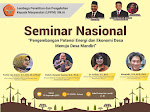
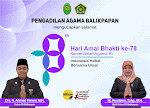










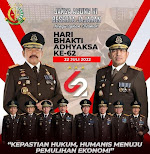








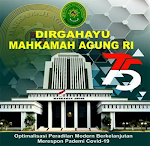











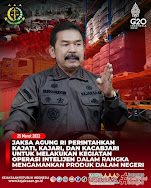


















0 comments:
Post a Comment